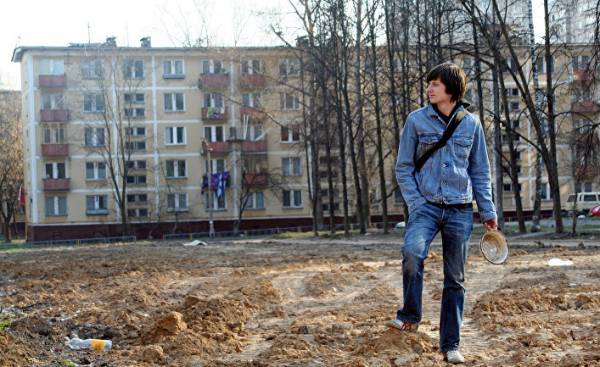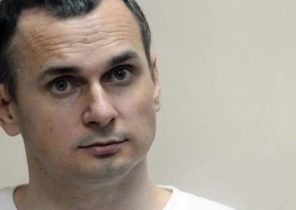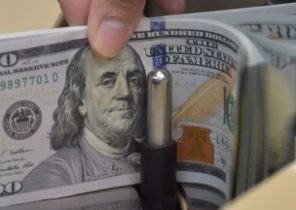
“It was 1963, my parents came out of the recently built metro station around was the countryside, villages and a large five-storey panel building with new apartments, ours was No. 28. I lived there for 43 years, until 2006. I can’t believe they are really demolished”.
Marina Y. Avdonina, 60 years, looking at the bare number of houses without plaster, with different balconies, each decorated in its own way, blending into the snow and next to the skyscrapers of the new Moscow reminiscent of Lego. The symbol of the Soviet dream in the people’s construction 1950-60-ies, which was launched by Nikita Khrushchev during the thaw, it was a global plan with the aim to give “every family in the apartment,” thus solving the problem of housing shortage in the postwar period. Residential five-story building, mostly made of prefabricated panels or bricks, without a lift, going fast and built only 25 years — at the time of the formation of communism. However, Khrushchev, received its name from the name of running the plan of the leader, remain in place, thousands of them, from Vladivostok to Baku, and many of them are on the verge of destruction and demolition.
Tuesday, 21 February, Moscow mayor Sobyanin announced that by 2018, all Khrushchev will be demolished, as it can not be repaired. Under threat of demolition were eight thousand houses (1700 already demolished since 1999) in the capital, 25 million square meters. Half a million people have to be “translated.” It is about going for a long time. But now the mayor made a special request to the Duma to “facilitate” the operation, while receiving the endorsement of Putin: “This is the right decision.” Chairman of the state Duma Volodin compares the reconstruction of Moscow in 1940-50-ies. But it’s not as easy as it seems.
“At first it was a shock: we moved to the Arbat, Moscow’s historic centre, where we lived in a communal apartment (what was the name of the notorious Soviet home, where they coexisted together strangers, — author’s note), I’m used to the ceiling above four meters, wooden flooring. In Golyanovo we got two little rooms, the ceilings in two and a half meters, linoleum flooring and such thin walls that you could hear every word in the next apartment. But finally we can live alone without other people. We were happy on our 41 square meter”, — says Avdonina.
It was a landmark change for the “Homo Sovieticus”, the long-awaited personal space. All free. Spartan dream on the cheap: this building, kidding the Russians must smell like cats, must be a separate bathroom, linoleum, cockroaches in the entrance and the balconies have Smoking alcoholics in t-shirts.
“It was comparable to a Grand humanitarian project, with the Egyptian pyramids in Russia: the state gives the apartment millions of people, even with minimum facilities” — sums up Sergei Nikitin, expert on Moscow history and lecturer of Russian culture at the University of Verona.
“At first they were housing utopia: in the first trial the Cheryomushki district in southwest Moscow has settled the stars of Soviet culture, famous filmmakers, and musicians. In the middle of the quarter was the pond where they bathed the children, around the Apple trees, there was even a cherry orchard.”
In 1957 the area was visited by pier Paolo Pasolini (Pier Paolo Pasolini), who visited Moscow during the festival of the Communist youth. He later wrote that the capital of the Soviet Union was like a “big City” (the area in Rome — approx. TRANS.). But the Soviet managers didn’t like it. Moscow has grown by leaps and bounds, has become a metropolis. Then began the decline: over the years, in order to save used all over the base materials, and Khrushchev became dark, inhospitable, becoming a ghetto area. Came to power, Brezhnev, came 70 years with their multi-storey construction. Today in zyuzino district, where plenty of Khrushchev, the problems with electricity, and the walls of the houses crumble. They are doomed to destruction.
Whether this marks the end of an era? “I know people who have tens of years doing home repairs in the expectation that the municipality will give them a new apartment.” The door opens to us Elena Kozlova, her 47 years, five years ago she bought an apartment in Izmailovo and repaired it at his own expense: “it is Unlikely they’ll take it, maybe only the old panel”.
Some experts believe the project is too costly, it will be difficult — almost impossible — for such a short time to find state funding, especially in conditions of economic crisis. Demolition also costs money, and the construction of new homes will take at least 20-30 years. If only they would not join private investment: Khrushchev is situated quite close to the center, for valuable, dainty for construction companies of the territory.
But where will the current residents of Khrushchev? Many don’t want to leave: they are afraid that they will send for MKAD, in the village. Sobyanin promised that they will be relocated to the “surrounding” areas, in “modern housing” that “will last 100 years.” But suspicions are only growing: in 2018, Moscow will elect a new mayor, and not whether this program is just pre-election maneuver to gain more votes among the less wealthy sections of society?
“The earth stands in the centre as gold, to demolish a five-story building to occupy the territory of the elite or commercial construction, is just manna for any Builder, writes opposition politician Dmitry Gudkov. But who will think about the infrastructure? In the centre there is no space for new residents. In Moscow under the guise of the Grand plan for preparing a new fraudulent speculation”.







